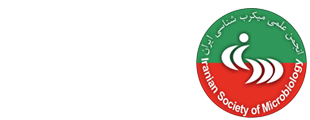1. Flemming HC, Wingender J. The biofilm matrix. Nature Rev Microbiol. 2010;8(9):623-33.
2. Da Re S, Le Quéré B, Ghigo JM, Beloin C. Tight modulation of Escherichia coli bacterial biofilm formation through controlled expression of adhesion factors. Appl Environ Microbiol. 2007;73(10):3391-403.
3. Römling U, Balsalobre C. Biofilm infections, their resilience to therapy and innovative treatment strategies. J Intern Med. 2012; 272(6):541-61.
4. Tenke P, Kovacs B, Jäckel M, Nagy E. The role of biofilm infection in urology. World J Urol. 2006; 24(1):13.
5. Anderson GG, Martin SM, Hultgren SJ. Host subversion by formation of intracellular bacterial communities in the urinary tract. Microbes Infect. 2004; 6(12):1094-101.
6. Reisner A, Maierl M, Jörger M, Krause R, Berger D, Haid A, et al. Type 1 fimbriae contribute tocatheter-associated urinary tract infections caused by Escherichia coli. J Bacteriol. 2014; 196(5):931-9.
7. Mulvey MA, Schilling JD, Martinez JJ, Hultgren SJ. Bad bugs and beleaguered bladders: interplay between uropathogenic Escherichia coli and innate host defenses. Proc Natl Acad Sci. 2000; 97(16): 8829-35.
8. Subashchandrabose S, Mobley HLT. Virulence and fitness determinants of uropathogenic Escherichia coli. Microbiol Spectr. 2015;3(4):1-34.
9. Stickler DJ. Urinary catheters: ideal sites for the development of biofilm communities. Microbiol. 2005; 5(11):598-608.
10. Anderson GG, Palermo JJ, Schilling JD, Roth R, Heuser J, Hultgren SJ. Intracellular bacterial biofilm-like pods in urinary tract infections. Science. 2003; 301(5629):105-7.
11. Soto S, Smithson A, Martinez J, Horcajada J, Mensa J, Vila J. Biofilm formation in uropathogenic Escherichia coli strains: relationship with prostatitis, urovirulence factors and antimicrobial resistance.J Urol. 2007; 177(1):365-8.
12. Reisner A, Krogfelt KA, Klein BM, Zechner EL, Molin S. In Vitro Biofilm Formation of Commensal and Pathogenic Escherichia coli Strains: Impact of Environmental and Genetic Factors. Bacteriol. 2006; 188(10): 3572–3581.
13. Meshram L, Patidar RK, Khare M, Bagde S, Sahare KN, Singh V. Comparative analysis between biofilm formation of commensal and pathogenic Escherichia coli isolates. Asiatic J Biotechnol Res. 2012;3:1441-6.Branda SS, Vik Å, Friedman L, Kolter R. Biofilms: the matrix revisited. Trends Microbiol.2005;13(1):20-6.
14. Collee DJ, Duguid P, Fraser AG, Marmion BP.Mackie and McCartney: Practical medical microbiology, 13th edition; Churchill Livingstone; 1989.
15. Stepanović S, Vuković D, Hola V, Bonaventura GD, Djukić S, Ćirković I, et al. Quantification of biofilm in microtiter plates: overview of testing conditions and practical recommendations for assessment of biofilm production by staphylococci. Apmis. 2007; 115(8):891-9.
16. Freeman D, Falkiner F, Keane C. New method for detecting slime production by coagulase negative staphylococci.J Clin Pathol. 1989;42(8):872-4.
17. Christensen GD, Simpson WA, Bisno AL, Beachey EH. Adherence of slime-producing strains of Staphylococcus epidermidis to smooth surfaces. Infect Immun. 1982;37(1):318-26.
18. Mathur T, Singhal S, Khan S, Upadhyay D, Fatma T, Rattan A. Detection of biofilm formation among the clinical isolates of staphylococci: an evaluation of three different screening methods. Indian J Med Microbiol. 2006; 24(1):25.
19. Melo PdC, Ferreira LM, Nader Filho A, Zafalon LF, Vicente HIG, Souza Vd. Comparison of methods for the detection of biofilm formation by Staphylococcus aureus isolated from bovine subclinical mastitis. Braz J Microbiol. 2013; 44(1):119-24.
20. Cucarella C, Solano C, Valle J, Amorena B, Lasa Í, Penadés JR. Bap, a Staphylococcus aureus surface protein involved in biofilm formation .J Bacteriol. 2001; 183(9): 2888-96.
21. Naves P, Del Prado G, Huelves L, Gracia M, Ruiz V, Blanco J, et al. Measurement of biofilm formation by clinical isolates of Escherichia coli is method‐dependent. J Appl Microbiol .2008; 105(2): 585-90.
22. Samet M, Ghaemi E, Jahanpur S, Jamalli A. Evaluation of biofilm-forming capabilities of urinary Escherichia coli isolates in microtiter plate using two different culture media. Inter J Mol Clin Microbiol. 2013; 1:244-247.
23. Thilakavathy P, vaSanTha PRiyan RM, Jagatheeswari PaT, Charles J, Dhanalakshmi V, lallitha S, Rajendran T, Divya B. Evaluation of Ica Gene in Comparison with Phenotypic Methods for Detection of Biofilm Production by Coagulase Negative Staphylococci in a Tertiary Care Hospital. J Clin Diagn Res. 2015; 9 (8): 16-19.
24. Skyberg J, Siek K, Doetkott C, Nolan L. Biofilm formation by avian Escherichia coli in relation to media, source and phylogeny. J Appl Microbiol. 2007; 102(2): 548-54.
25. Ponnusamy P, Natarajan V, Sevanan M. In vitro biofilm formation by uropathogenic Escherichia coli and their antimicrobial susceptibility pattern. Asian Pac JTrop Dis. 2012; 5(3):210-3.
26. Knobloch JK M, Horstkotte MA, Rohde H, Mack D. Evaluation of different detection methods of biofilm formation in Staphylococcus aureus. Med Microbiol Immun. 2002; 191(2):101-6.
27. Růžička F, Hola V, Votava M, Tejkalova R, Horvát R, Heroldová M, et al. Biofilm detection and the clinical significance of Staphylococcus epidermidis isolates. Folia microbiologica. 2004; 49(5):596.
28. Oliveira A, Maria de Lourdes R. Comparison of methods for the detection of biofilm production in coagulase-negative staphylococci. BMC Res Notes. 2010;3(1):260.
29. Deka N. Comparison of Tissue Culture plate method, Tube Method and Congo Red Agar Method for the detection of biofilm formation by Coagulase Negative Staphylococcus isolated from Non-clinical Isolates. Int J Curr Microbiol App Sci. 2014; 3(10):810-5.
30. Hassan A, Usman J, Kaleem F, Omair M, Khalid A, Iqbal M. Evaluation of different detection methods of biofilm formation in the clinical isolates. Braz J Infect Dis. 2011; 15(4):305-11.
31. Saxena S, Banerjee G, Garg R, Singh M. Comparative study of biofilm formation in Pseudomonas aeruginosa isolates from patients of lower respiratory tract infection. J Clin Diagn Res. 2014;8(5): 911.
32. Panda PS, Chaudhary U, Dube SK. Comparison of four different methods for detection of biofilm formation by uropathogens. Indian J Pathol Microbiol. 2016;59(2):177.






